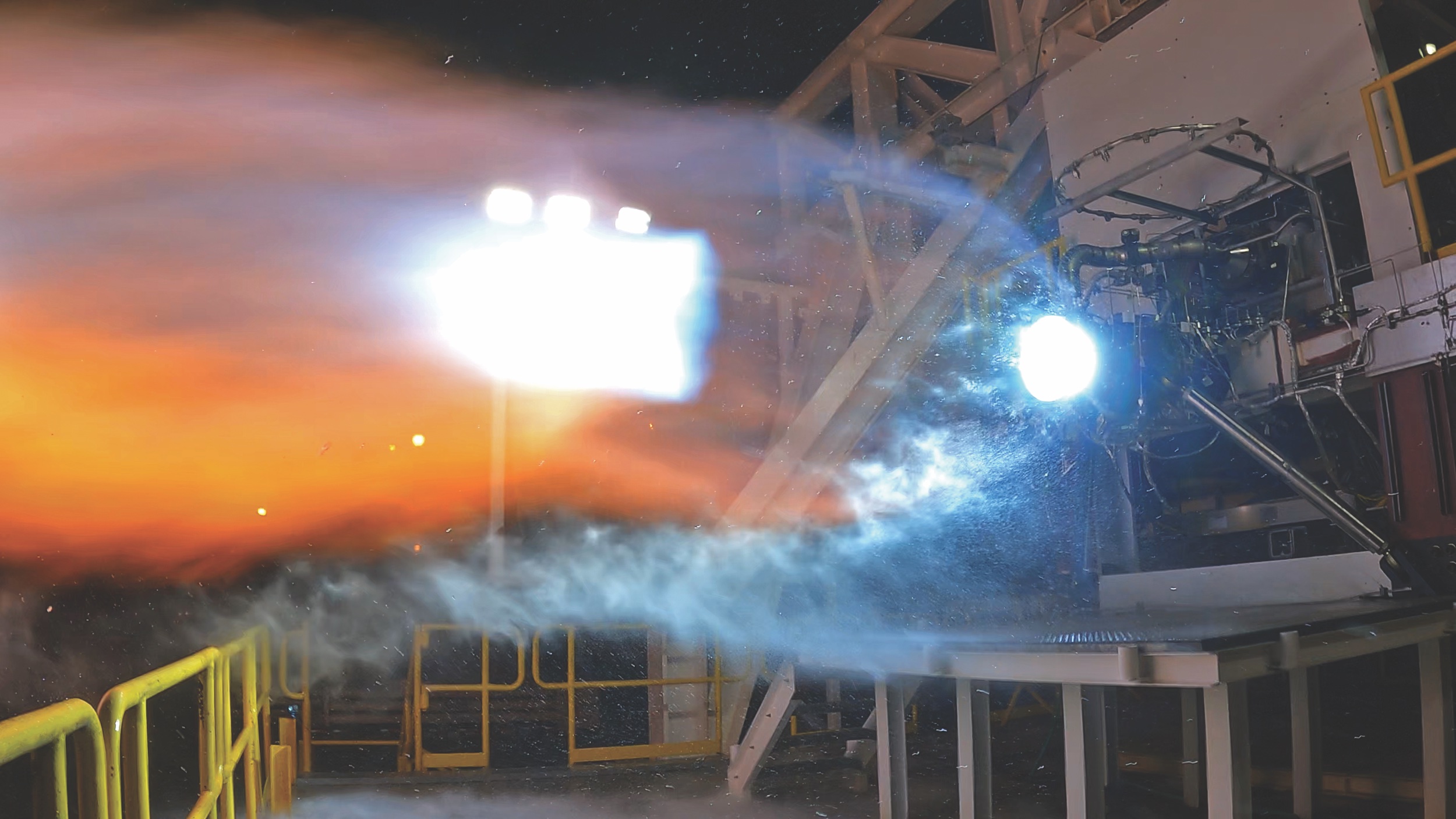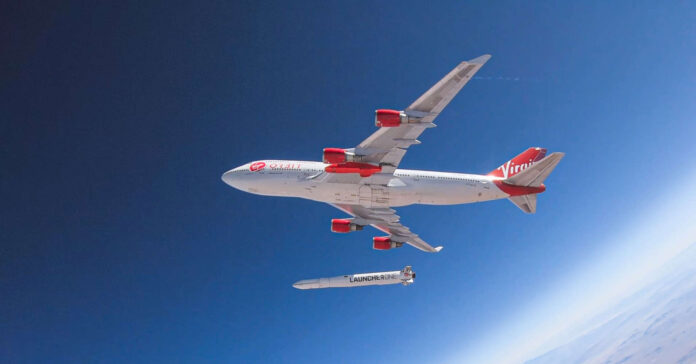The aerospace ecosystem of the greater San Fernando Valley is a robust one.
There are multiple companies located in the area, including Aerojet Rocketdyne Holdings Inc. in Chatsworth and Northrop Grumman Corp. in Woodland Hills, Northridge and Palmdale. Then there are small machine shops scattered throughout the Valley doing work for the big aerospace companies.
But the ecosystem is not without its risks and perils as evidenced by the recent bankruptcy filing of Virgin Orbit Inc. The Long Beach-based company has operations at the Mojave Air and Space Port in the Antelope Valley.
Virgin Orbit., which flew its carrier aircraft from Mojave for at least four flights, filed for Chapter 11 reorganization on April 4.
Dan Hart, the chief executive of Virgin Orbit, said in a declaration filed as part of the bankruptcy proceedings, that the company and its indirect parent entity, Virgin Investments Ltd., have invested significant capital with comparatively small corresponding revenue to date.
Virgin Orbit has successfully launched four vehicles and roughly 33 satellites.
A fifth launch, from England in January, seemed to have doomed the company.
The Start Me Up mission started out okay but then the rocket, after reaching space, developed an anomaly or glitch that caused it to shut down during the firing of the second stage.
“This event ended the mission, with the rocket components and payload falling back to Earth within the approved safety corridor without ever achieving orbit,” according to a release from Virgin Orbit.
Hart said the mission failure as well as challenges raising necessary funds were among the issues plaguing the company.
Other challenges included the amount of time to develop government contracts, operational inefficiencies that slowed launch rates and substantial fixed capital costs to maintain its launch, manufacturing and space services operations.
“The (company’s) unsuccessful launch in January 2023 negatively impacted investor discussions,” Hart wrote in the document.
Hart mentioned in his declaration that the cause of the breakdown had been determined and duplicated through ground testing and the appropriate changes had been made to LauncherOne to eliminate the issue on subsequent rockets.
“The (company) expects to receive ‘Return to Flight’ status from the FAA during the month of April and the next rocket is in final integration and test phase in advance of a planned launch in the third quarter of 2023,” Hart wrote in the declaration.
Billionaire Sir Richard Branson, who has a minority stake in Virgin Orbit through Virgin Group Ltd., said in a statement that he had put about $1 billion of his own money into the company, including $60 million since November.
“This significant funding was not enough to counter the strong headwinds and liquidity challenges Virgin Orbit continues to face,” Virgin Group said.
Busy field
The Long Beach-based company found itself in a crowded field of other launch companies, many of them based in Southern California.
Alex King, founder of Cestrian Capital Research Inc., an investment firm in the aerospace and tech industries in Newport Beach, said that between traditional companies such as United Launch Alliance, the Colorado joint venture of Boeing Co. and Lockheed Martin Corp. with operations in El Segundo; Space Exploration Technologies Corp., or Space X, in Hawthorne, and newer entrants including Rocket Lab USA Inc., also in Long Beach, there are just too many providers for launch capabilities.
“Virgin Orbit had such a niche position that if you think about the number of customers they could potentially serve, it’s tiny,” King said. “In the end, they didn’t have a viable business and it doesn’t surprise me what’s happened to them.”
King said it is unlikely competitors will be able to take advantage of Virgin Orbit filing for bankruptcy.
Virgin Orbit has let go of 675 employees, or about 85% of its total workforce. King said that some will get picked up by other aerospace companies and while those employees may be talented, there isn’t one that could be a game changer to a new employer.
“It is not like we are talking about a major player that went under; they were a niche player who just started to get a little commercial traction,” King continued. “Aside from a little less competition, I don’t think there is any benefit to anyone else.”
And what about the competition? Are other local aerospace companies one failure away from bankruptcy?
That could be the question on the minds of the executives at Relativity Space. Like Virgin Orbit, the company is located in Long Beach, where it is using 3D printers to make its Terran rockets. The first launch of Terran 1 last month ended in failure although the rocket technically made it into space. It failed to make it into Earth orbit and splashed down into the Atlantic Ocean. The company has not yet released any information on what went wrong.
Will others fail?

To better understand if other aerospace companies are close to bankruptcy, King said one needs to look at the basic economics of startups. The questions they must ask themselves are can you get a big enough market, do you have a clear path to profitability and do you have a quality base of equity investors, he added.
One also needs to look at the class of aerospace companies that went public via a special purpose acquisition company or SPAC, rather than through an IPO, he said.
“Of those, the best of them I think is Rocket Lab,” King said.
He called Rocket Lab relatively well funded with an established launch record. The company also has a business plan that is designed to go beyond launches to other sectors of aerospace.
The other company that is in good shape is Spire Global Inc., a Virginia satellite company that has “a thin balance sheet” but is still doing okay, King said.
As of April 17, shares of Spire had lost about 62% of their value over a 52-week period, when it closed at 67 cents. That compares to the $1.75 closing share price in April of last year.
Astra Space Inc., an Alameda space launch company, had it even worse. Astra had lost about 88% of its share price over the 52-week period, closing at 41 cents on April 17.
While King doesn’t own shares in Virgin Orbit, he does own stock in Rocket Lab and Spire.
Even the strong companies, like Rocket Lab and Spire, are going to have a harder time now than they would have a few years ago, King said.
“Virgin Orbit didn’t have a viable business; therefore, in a tough funding environment it doesn’t surprise me that they went under,” King said. “There were too few customers to keep the business going.”
It was a sentiment that Eric Berger, senior space editor at Ars Technica, agreed with in an April 6 interview with Yahoo Finance Live.
“We’re at a perilous time for space startups because for a long time, with low interest rates, they have been living with basically free money,” Berger said. “Now we’re seeing capital availability dry up, and it’s more expensive to borrow and raise funding.”
A lot of space startups still aren’t showing profits or even positive cash flow, Berger said, including Virgin Orbit.
“It becomes more difficult to convince investors to part with money when you have 675 employees and are launching two or three rockets a year,” he added. “That’s just not financially sustainable.”
Valley aerospace companies are working on models that are sustainable.
Aerojet Rocketdyne, for instance, announced on April 18 that it completed the four engines for the Artemis III mission that will take humans back to the moon in Chatsworth.
At Northrop Grumman, there is plenty of activity taking place in the greater Valley region.
Its Palmdale factory, located on Air Force Plant 42, is where the Falls Church, Virginia aerospace and defense contractor produces the center fuselage for F-35 Lightning II, built by Lockheed Martin.
Palmdale is also where the Global Hawk unmanned aircraft and its variant, the Triton, are built, along with the two X-47 prototype aircraft that were the first to autonomously take off and land on an aircraft carrier. It is also where maintenance and upgrades are made to the B-2 Spirit stealth bomber.
And the new program for Northrop up in Palmdale is the B-21 Raider, the Air Force’s latest stealth bomber. The aircraft was unveiled to the public on Dec. 2.
